SEAWORLD (Day 9 - part 3)
It was almost time for Orca Encounter, so we hurried along to find good seats.... out of the splash zone!




The park's main attraction is its 8 orcas (or killer whales), which are housed in a 7 million gallon habitat.
Shamu was the first killer whale brought here in 1965. In the 1960s, the capture of wild orcas (for display, performances and breeding) resulted in their many injuries and deaths, including low post-capture survival rates. The practice of keeping wild orcas was controversial, due to the separation from their familial pod during capture as well as their health in captivity. There were also concerns for the safety of trainers entering the water to work with them, with some attacks being fatal.
Live captures peaked in the early 1970s but eventually became less as marine parks learned how to maintain populations using captive breeding programs. In 2016, SeaWorld announced they were ending their in-park breeding program and that the current orcas will be the last generation at the park. In 2017, their physically demanding (for the orcas... such as having to balance a trainer on their noses) entertainment show was replaced with a more educational presentation that gives insight into various aspects of a killer whale's life. The plan is to eventually phase out the shows altogether.
The park's current goal is to educate guests about wild animals and inspire them to take action to protect the environment. Although the orca is not on the endangered species list, some populations are threatened or at risk due to pollutants, depletion of prey, conflicts with fishing activities, ships, stress from whale-watching boats, and habitat loss.

We were told that Corky is now 58.


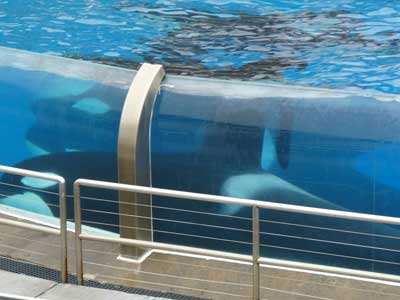



(left) This must be Ulises.
Collapse of the dorsal fin is common with life in captivity, especially in adult males. When this happens in the wild, it's an indication of a health problem. This loss of structural integrity could be due a wide variety of reasons: inadequate depth of the tanks (which results in less fin support due to less water pressure), stress, reduced swimming (frequent circling within the tanks), medications, food, and so on.


A heron makes sure to get the best seating... with opportunities to pilfer some food.
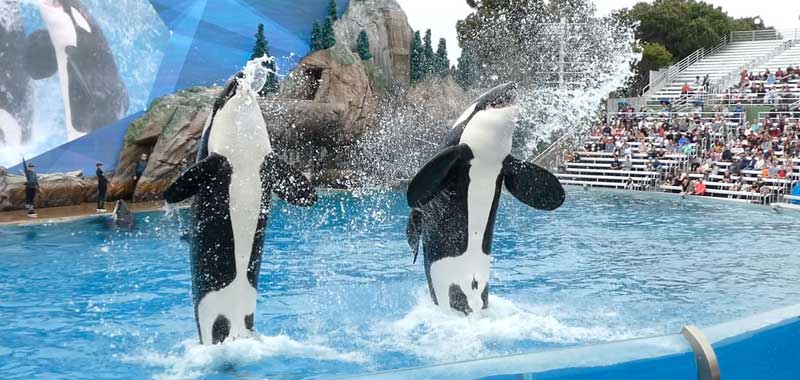
The show begins!




After each stunt, the orcas always quickly returned for their reward.


Here it comes!


An egret has joined the heron with high hopes.


There are apparently many ways to splash the audience. One is with a sideways tail sweep...


Another way is by vigorous tail slaps...



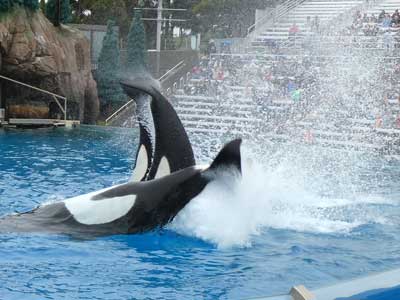


... and third is by spitting water. Note how the orca surfaces with an open mouth which fills with water...


... which it then jettisons towards the audience.


A double soaking ... A tail flip during a jump will also do the trick!

The orca is the largest species of the dolphin family. They're found in all the world's oceans, from the chilly Arctic and Antarctic regions to warm, tropical seas. Males range in length from 20 to 32 feet, can weigh over 8.8 tons and have dorsal fins which can reach 6 feet in height. Females range from 6 to 23 feet long and weigh 3.3 to 5.5 tons. They can swim as fast as 30 miles per hour!
Orcas were given the name of 'killer whales' by ancient sailors who observed groups of them hunting larger whale species, even massive blue whales. Contrary to how friendly they look here, they are the ocean's most dangerous predator. They are highly intelligent, fast learners and can teach each other new hunting techniques. Some feed entirely on fish, while others hunt seals, sea lions, walruses, dolphins and even some species of shark including great whites. Nothing hunts an orca!

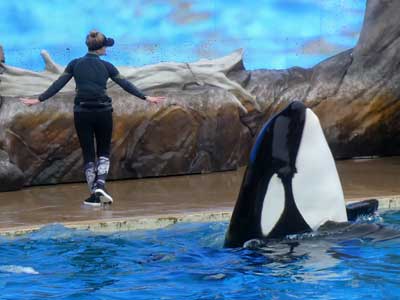
Dancing and spinning!


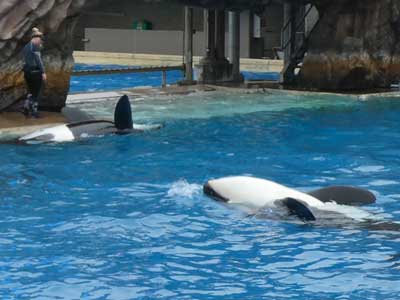
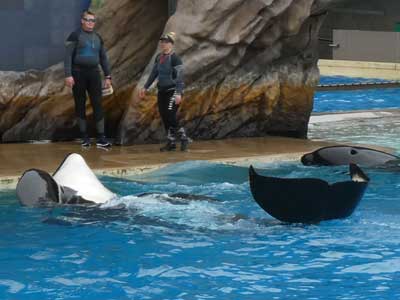
A liesurely backfloat
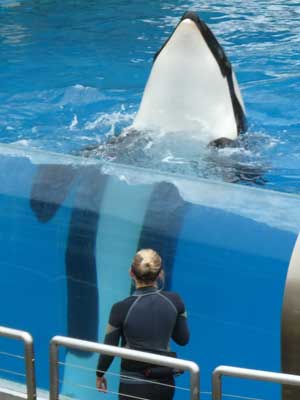





In spite of their seemingly large size, they are dwarfed by such ocean dwellers as the Blue Whale.


Eyes
return • continue

